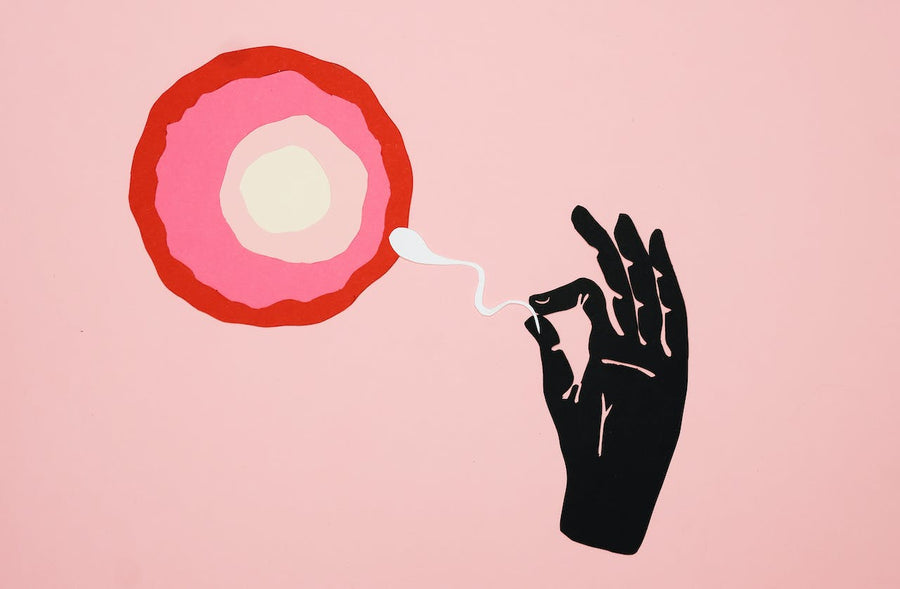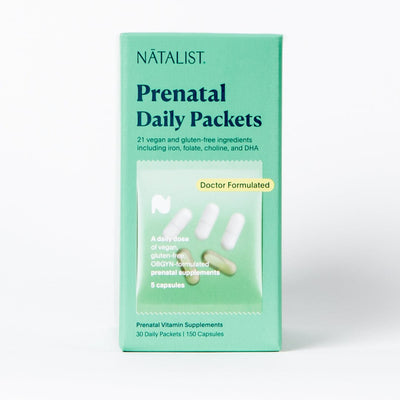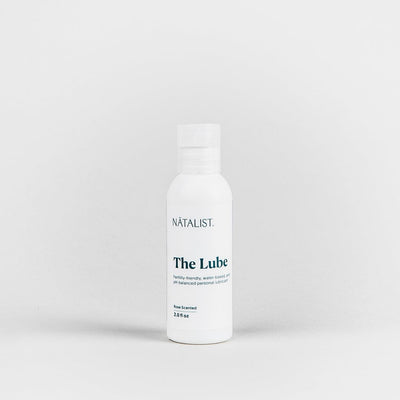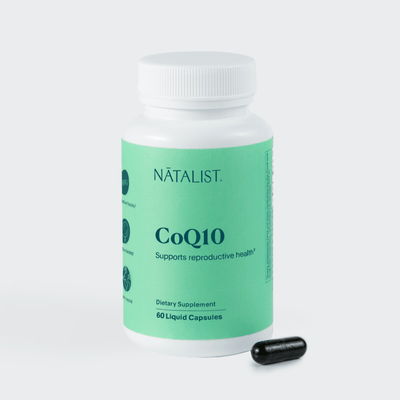What Are Female Condoms?

By Dr. Kenosha Gleaton, OBGYN
An Overview of Birth Control
Contraception, AKA birth control, includes many different methods that are used to prevent pregnancy. There are two key ways that birth control works: preventing the release of an egg (ovulation) and preventing sperm from reaching an egg. [1]
Hormonal Birth Control
Hormonal methods work by releasing different hormones in the body, like estrogen and progestin. Hormonal methods include the well-known combination birth control pill, the mini pill, vaginal ring, dermal patch, Depo-Provera shot, hormonal IUDs, and the implant. [1] Hormonal birth control methods work by preventing ovulation or making it difficult for a pregnancy to occur by altering uterine conditions. [1] For example, some methods will cause a thin uterine lining or a change in cervical mucus. There is also a non-hormonal IUD made with copper that works similarly to hormonal methods. [1]
Sterilization
Sterilization refers to surgical procedures that are often permanent. For those assigned female at birth, sterilization procedures are called tubal ligations. For those assigned male at birth, sterilization is known as a vasectomy. [1]
Common Barrier Methods
Condoms are the most used and widely known barrier method. Condoms work by acting as a barrier between sperm and the uterus. [1-2] There are male (external) condoms and female (internal) condoms, as well as other barrier methods like spermicide, sponges, cervical caps, and diaphragms. [2]
Fertility Awareness Method (FAM) and Natural Family Planning
Another way of preventing pregnancy is by tracking fertility and timing sex outside of someone’s fertile window, sometimes referred to as natural family planning. This can be done using ovulation trackers, tracking body temperature and cervical mucus, or lactational amenorrhea, which is when ovulation is suppressed during breastfeeding for up to six months. [3] With typical use, FAM is only about 76% effective, much lower than other contraceptive methods. [3]
What Are Female Condoms?
A female condom, also known as an internal condom, is a pouch that can be inserted internally to prevent pregnancy and disease. [4] Female condoms work the same way as the more commonly known male condom. Both types of condoms are barrier methods that prevent sperm from reaching an egg or staying inside the body. [4-5] Female condoms can also reduce the risk of many different sexually transmitted infections (STIs) such as HIV, chlamydia, gonorrhea, and others.
How to Use Female Condoms
Using an internal condom is a bit different than using external condoms. Internal condoms typically have a soft, flexible ring on each end. One end is closed and is inserted into the vagina, while the other end is open and will remain on the outside of the body. [4] The closed end can be squeezed together and inserted inside, until the inner ring is as far up as possible, often resting against the cervix. The outer ring should remain outside of the vagina, covering the vaginal opening. [4] When someone is ready to discard the condom, they can gently twist the outer ring and pull the condom out of the vagina, throwing it away after use. Similarly to male condoms, female condoms should only be used one time.
Are Female Condoms Safer Than Male Condoms?
According to the Centers for Disease Control and Prevention (CDC), 21% of people assigned female at birth using a female condom will still get pregnant in the first year of use, compared to about 13% of those using external condoms. [4-6] This means that the effectiveness of internal condoms is slightly lower than external condoms, however research does suggest that this is due to incorrect or inconsistent usage. With perfect use, internal condoms are about 95% effective, compared to external condoms being 98% effective with perfect use. [5-6]
There are more ways to prevent pregnancy and reduce the risk of STIs that may be used in combination with external or internal condoms. If you have specific questions or concerns about pregnancy or STI prevention, you should speak with a healthcare provider.
Tips for Use
If you are interested in using an internal condom, there are some do’s and don’ts that may aid in the effectiveness and ease of use of the condom [7]:
- Check the expiration date
- Ensure there are no tears or defects
- Do not use oil-based lubricants
- Use water-based lubricants if desired or needed (The Lube is water-based and paraben-free!)
- Store condoms in a dry, cool place
- Don’t use a male and female condom at the same time, as this can cause tearing
- Don’t reuse condoms
- Don’t flush condoms
Do I Need to Use Condoms During Pregnancy?
If you are having sex during pregnancy, it’s important to take all necessary precautions to avoid infections or other negative outcomes. First things first, not everyone should be having sex while pregnant. Make sure you consult with your provider before moving forward with sex. If you aren’t considered high-risk and aren’t in danger of premature labor, you may be cleared to have sex. [8] On the other hand, those with a high-risk pregnancy, history of vaginal bleeding during pregnancy, problems with the placenta, and more, may be advised to abstain from sex. [8]
That being said, condoms may not be necessary if you are in a monogamous relationship with your partner. If you and your partner are having sex with other people or you’re having sex with a new partner, you should use a condom. [8] Remember to consult your provider directly as well to determine if it’s safe for you to be sexually active.
Supporting Your Goals With Natalist
Reproductive and sexual health aren’t always easy to talk about, but they’re extremely important. It’s important to have access to products and resources that are trustworthy and easy to understand. Natalist was founded by doctors and moms who have been in your shoes. Whether or not you’re actively planning for pregnancy, you can learn more about your health with fertility hormone tests, support your nutritional goals with high-quality supplements, or prioritize your self-care with products that pamper and nourish your body.
References:
- Bansode OM, Sarao MS, Cooper DB. Contraception. [Updated 2023 Jul 24]. In: StatPearls [Internet]. Treasure Island (FL): StatPearls Publishing; 2023 Jan-. Available from: https://www.ncbi.nlm.nih.gov/books/NBK536949/
- Barrier Methods of Birth Control: Spermicide, Condom, Sponge, Diaphragm, and Cervical Cap. FAQ022. American College of Obstetricians and Gynecologists. April 2022. https://www.acog.org/womens-health/faqs/barrier-methods-of-birth-control-spermicide-condom-sponge-diaphragm-and-cervical-cap
- Smoley, B. Robinson, C. Natural Family Planning. Am Fam Physician. 2012;86(10):924-928
- Female Condom. Cleveland Clinic. October 2018. https://my.clevelandclinic.org/health/drugs/17946-female-condom
- Jacobson, John. Zieve, David. Conaway, Brenda. Female condoms. MedlinePlus. NIH. Reviewed January 2022. https://medlineplus.gov/ency/article/004002.htm
- Condoms. Cleveland Clinic. September 2022. https://my.clevelandclinic.org/health/treatments/9404-condoms
- Female (Internal) Condom Use. CDC. February 2022. https://www.cdc.gov/condomeffectiveness/internal-condom-use.html
- Sex during pregnancy: What's OK, what's not. Mayo Clinic. July 2022. https://www.mayoclinic.org/healthy-lifestyle/pregnancy-week-by-week/in-depth/sex-during-pregnancy/art-2004531
Dr. Kenosha Gleaton is board-certified in gynecology and obstetrics and is the Medical Advisor of Natalist. She received her MD from MUSC and completed her residency at Carolinas Medical Center in Charlotte, NC.
Dr. Gleaton is passionate about women, health equity, and mentoring. She is the CEO of The EpiCentre, an OBGYN spa-like practice, and is a Clinical faculty member of Charleston Southern University. She is also a member of the American College of Obstetrics & Gynecology, the American Association of Gynecologic Laparoscopists, and the American Association of Professional Women




















